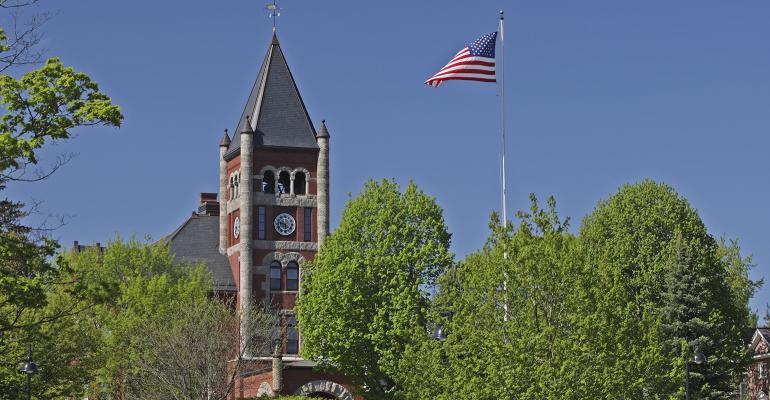Public universities, where most students attend, charge significantly different prices. And the policies that dictate who receives financial aid and merit scholarships also vary dramatically.
These are two of the takeaways of new research conducted by the Urban Institute that explores variation among states in financing public higher education.
Across the country, tuition and fees at public universities climbed 44 percent in the decade ending in 2015. During that same period, community college prices jumped 30 percent. Meanwhile, state support for these public institutions has eroded over that period.
A number of states with the highest public university tabs are on the East Coast, where you’ll also find many of the most expensive private colleges and universities. The priciest state schools are located in New Hampshire, where the average tuition/fees, at $14,712, are three times higher than the tuition/fees at Wyoming schools, at $4,646, which has the lowest-priced universities.
Highest Price States
Here are the states where public universities are charging the highest tuition and fees for in-state residents, according to Urban Institute estimates:
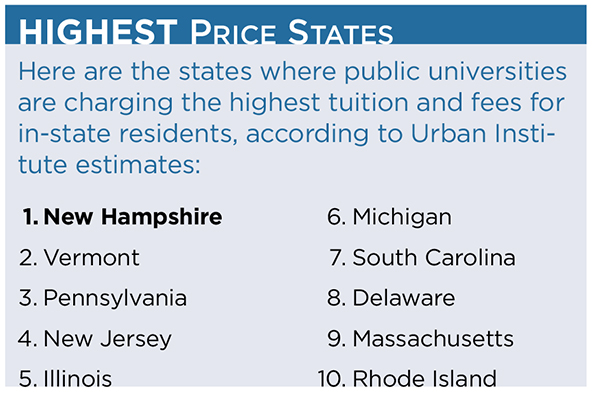
With elevated prices for state and private universities on the East Coast, it’s not surprising that the college debt levels are also the highest in that region. According to a new study by the Institute for College Access & Success, grads with the largest debt include those who attended schools in Delaware, New Hampshire, Pennsylvania, Rhode Island, Maine and Connecticut. In contrast, debt levels are the lowest in Utah, New Mexico, Nevada, California and other Western states.
Lowest Priced States
According to the Urban Institute, the lowest average tuition prices are found in many western states. The lowest-priced states include:
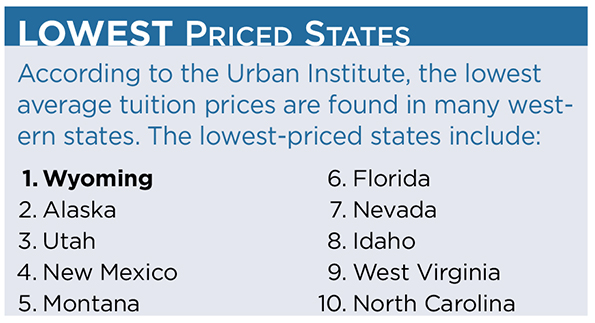
Nonresidents
Just as pertinent to some of your clients is what state universities are charging nonresidents. State universities have been aggressively recruiting affluent outsiders, and most of them are doing so by dispensing merit scholarships. Public universities have been making this push to attract more revenue to supplement weakened state financial support and to boost their U.S. News & World Report rankings.
The percentage of high school graduates who enroll out of state ranges from 7 percent in Mississippi to nearly half in states like Vermont, New Hampshire, Connecticut and New Jersey, according to the Urban Institute study. States where relatively few students remain in state tend to have a larger proportion of enrollment of students from out of state.
Priciest States for Nonresidents
The study also ranked the states based on how expensive their schools are for outsiders. Here are the states where public universities charge the highest prices, on average, to nonresidents:
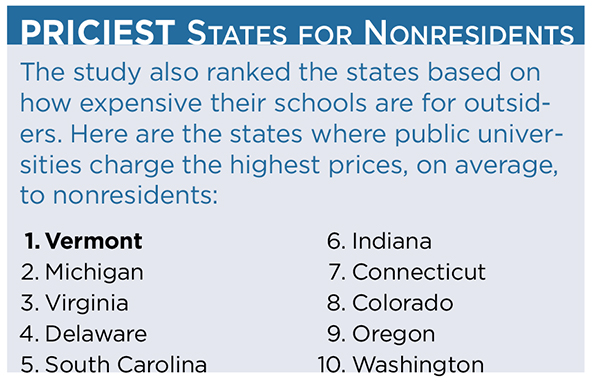
Cheapest States for Nonresidents
Here are the states where state universities charge the lowest prices to outsiders:
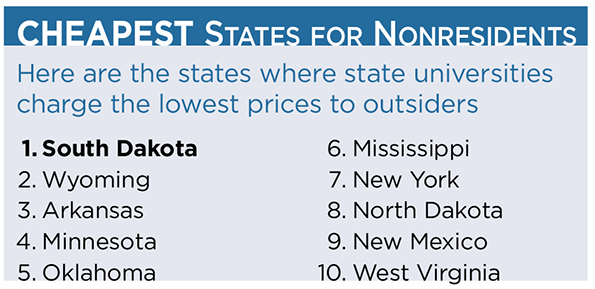
The states also have different policies regarding scholarships and grants. In the South, states are much more likely to dispense awards based on academic achievement—grade point averages and standardized test scores. South Carolina, Georgia, Louisiana, Tennessee and Arkansas distribute the most money via merit awards. States above the Mason-Dixon Line are far more likely to devote most or all of their college aid to students who need financial help.
State support hasn’t recovered
The researchers also found that state support of higher education dropped significantly when the Great Recession hit, and it hasn’t recovered. Nationally, higher-ed funding by state governments was about the same in 2014 as in the fall of 2000, after adjusting for inflation.
While state support shrunk significantly during that period, enrollment at public universities began accelerating as more Americans concluded that getting additional education could help them secure jobs or better positions.
Rapid enrollment growth between fall 2000 and fall 2010 was a significant factor in the decline of per student funding over this period, with the Great Recession accelerating the trend. Nationally, enrollment peaked in fall 2010. The largest drop in state funding was in the fall of 2011, when 44 states decreased their support.
You can find statistics for your own state’s higher-ed system by heading to the Urban Institute website and using its iInteractive map.


